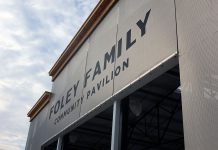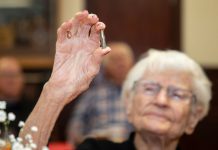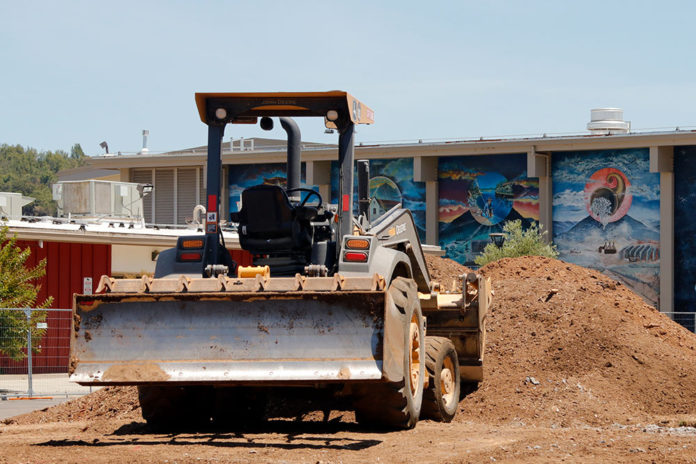
With the Healdsburg public school campuses on “summer vacation” for the most part, two of them are getting much needed construction upgrades and repairs that tap into the few remaining Measure D and more recent Measure R bond funds.
One of them, at Healdsburg Elementary School (HES), brings the school up to ADA standards with fixes to the main entrance steps. The other, at Healdsburg High, is a more high-profile effort to remove a dozen decades-old redwoods and other trees on the campus—a project now underway and causing visible disturbance to the campus’s most distinctive features.
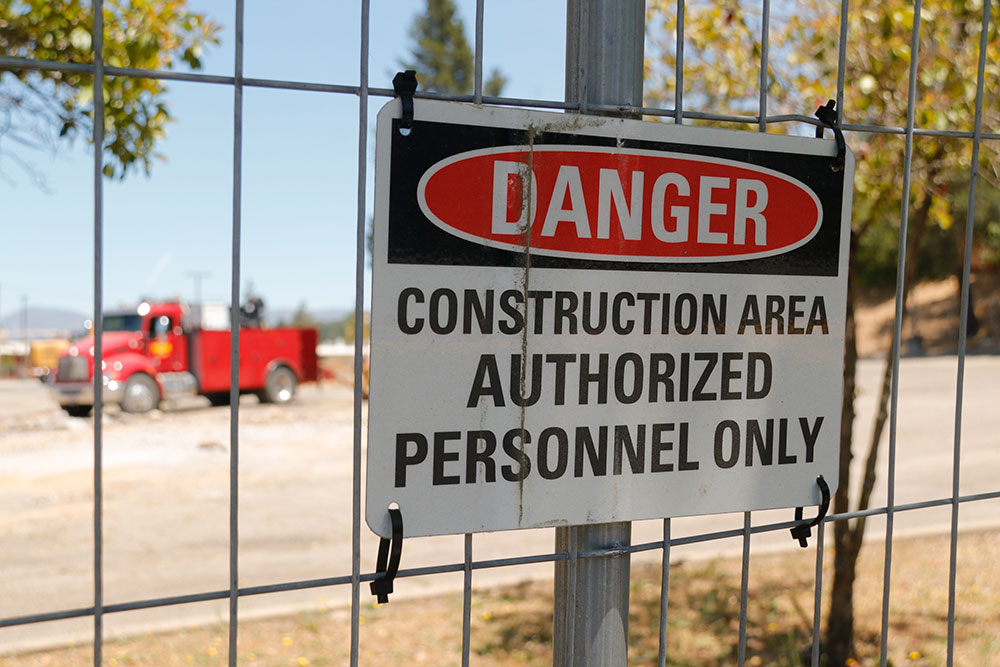
The line of redwoods that created a corridor from the main entrance, Prince Avenue, to the colorfully muraled Smith Robinson Gym is now gone. One of the dozen trees toppled over in a recent windstorm—no one was hurt and there was no damage, but it made all the more clear the importance of dealing with the hazard.
So last week the crews got to work: cutting down the trees in segments and stump-grinding their bases to prevent (if possible) their possible re-emergence. The necessity of the project became clear during the 2019 renovation of Smith Robinson Gym, occasioned in part by a buckled floor. Workers “found a tangled mess of redwood roots,” said Supervisor Chris Vanden Heuvel, that had spread from the grove to the building.
“We literally spent hundreds of thousands of dollars cutting the roots out from under the gym so that they weren’t disrupting the floor anymore,” said the supervisor, “which then led to further deterioration of the trees.”
After multiple consultations with arborists, the necessity for complete removal became clear. “Though a native species, Redwoods have sprawling, shallow root systems that rely upon the ability to absorb a large amount of moisture,” wrote Vanden Heuvel in a June 16 message to staff and parents advising them of the project.
The tree removal, completed in a matter of days, left behind mounds of redwood bark. Clearly, replanting redwoods is not being considered. Instead, a mixed grove of Pistache, Crepe myrtle trees and Western redbud—trees found elsewhere on campus as well—will be planted.
“We want to make it a usable area that is inviting for kids to congregate and potentially for classes to go outside,” Vanden Heuvel said. “So it will be a grove; it just won’t be a redwood grove.”
The tree removal and replanting project extends to the student parking lot at the intersection of Prince and Powell avenues, which will likely be dug up to remove trees and make room for less problematic species.
A third component of the project involves installing new school signage at that intersection, a “monument sign” that more clearly identifies the entrance to Healdsburg’s only high school.
Taken all together, the high school project is being funded by the last of the Measure D bonds from the 2016 election, in the amount of $2.4 million.
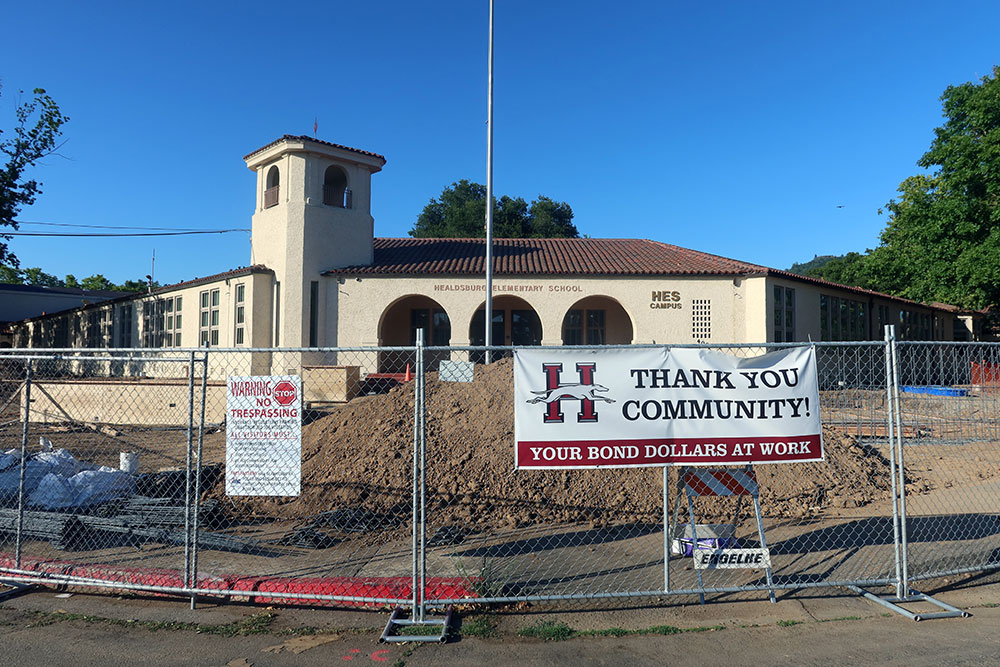
First steps in education
Still more expensive is the main entrance and front facade upgrade at Healdsburg Elementary School, budgeted at $4.5 million. The project is funded by Measure R bonds, just passed in November. Sturdy wire fencing was installed around the school at the end of the school year so the project could proceed.
“The main building at HES was constructed in the 1920s, and is a beautiful historic building and is accompanied by fittingly historic challenges,” Vanden Heuvel wrote in that message to the school.
“As a result, we are redoing the main entrance along with landscaping and sidewalks at the front of the school, which will result in new stairs, a ramp, and new seating areas and landscaping,” he wrote. “All of this is being done in a way that maintains the historical character of the building while updating accessibility to current standards.”
This closure of the elementary school also provides the city and district with the opportunity to convert all on-campus irrigation, including in the Little League playing fields on the east side of the school, to the new recycled water or “purple pipe” system.
The lead architect on both projects is Kevin Chapin of Quattrocchi Kwok Architects (QKA), which focuses on schools and other public buildings throughout Northern California.


